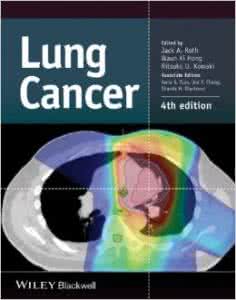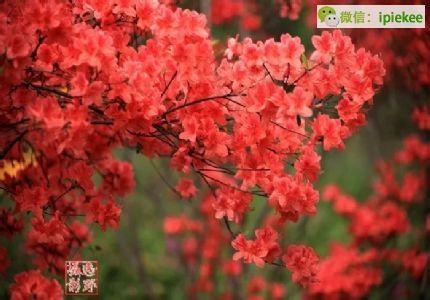Lung Cancer Risk in White and Black Americans
STEVEN D. STELLMAN, PHD, MPH, YU CHEN, MPH, JOSHUA E. MUSCAT, MPH, MIRJANA V. DJORDJEVIC PHD, JOHN P. RICHIE, JR., PHD, PHILIP LAZARUS, PHD, SETH THOMPSON, PHD, NASSER ALTORKI, MD, MARIANNE BERWICK, PHD, MARC L. CITRON, MD, SUSAN HARLAP, MD, TAJINDER B. KAUR, MD,
ALFRED I. NEUGUT, MD, PHD, SARA OLSON, PHD, JOHN M. TRAVALINE, MD, PHILIP WITORSCH, MD, AND ZUO-FENG ZHANG, MD, PHD
PURPOSE: To test whether differences in smoking-related lung cancer risks in blacks and whites can ex-plain why lung cancer incidence is greater in black males than in white males but about equal in black and white females, given that a greater proportion of blacks are smokers, but smoke far fewer cigarettes per day than do whites.
METHODS: A hospital-based case-control study was conducted between 1984 and 1998 that included interviews with 1,710 white male and 1,321 white female cases of histologically confirmed lung cancer, 254 black male and 163 black female cases, and 8,151 controls. Relative risks were estimated via odds ra-tios using logistic regression, adjusted for age, education, and body mass index.
RESULTS. We confirmed prior reports that smoking prevalence is higher but overall dosage is lower among blacks. Overall ORs were similar for blacks and whites, except among the heaviest smoking males (21 cigarettes per day or 37.5 pack–years), in whom ORs for blacks were considerably greater than for whites. Long-term benefits of cessation were similar for white and black ex-smokers. Smokers of menthol flavored cigarettes were at no greater risk for lung cancer than were smokers of unflavored brands.

CONCLUSIONS. Lung cancer risks were similar for whites and blacks with similar smoking habits, ex-cept possibly for blacks who were very heavy smokers; this sub-group is unusual in the general population of African American smokers. Explanations of racial disparities in lung cancer risk may need to account for modifying factors including type of cigarette (yield, mentholation), diet, occupation, and host factors such as ability to metabolize mainstream smoke carcinogens. Ann Epidemiol 2003;13:294–302 (C) 2003 Elsevier Science Inc. All rights reserved.
KEY WORDS: Lung Cancer, Cigarettes, Smoking, Risk, Racial Differences, Dosage, Menthol.
Lung cancer rates in the US show substantial unexplained racial variability. SEER incidence rates have been reported higher for blacks than whites in every year since 1973, with rate differentials between 34% and 67%. (1, 2). The preva-lence of cigarette smoking has been considerably higher in black than in white males since 1950. It was slightly higher in black than in white females from 1962 until 1992, after which the rates have been nearly equal (3–6). The seeming
From the American Health Foundation, One Dana Road, Valhalla, NY
10595 (S.D.S.); Department of Epidemiology, Mailman School of Public
Health, Columbia University, 630 West 168th Street, PH-18, New York,
NY 10032 (S.D.S., Y.C., A.I.N.); Division of Epidemiology, American
Health Foundation, One Dana Road, Valhalla, NY 10595 (J.E.M.); To-
bacco Control Research Branch, Division of Cancer Control and Popula-
tion Sciences, National Cancer Institute, 6130 Executive Boulevard, EPN
4039, Rockville, MD 20852 (M.V.D.); Division of Nutritional Carcinogen- esis, American Health Foundation, One Dana Road, Valhalla, NY 10595 (J.P.R.); Divisions of Cancer Control and Mol. Oncology, H. Lee Moffitt Cancer Center, MRC-2E, 12902 Magnolia Drive, Tampa, FL 33612 (P.L.); Bristol-Meyers Squibb, 5 Research Parkway, Wallingford, CT 06492 (S.T.); Division of Thoracic Surgery, New York Presbyterian Hospital, 525 East 68th Street, New York, NY 10021 (N.A.); Department of Epidemiology & Biostatistics, Memorial Sloan-Kettering Cancer Center, 1275 York Avenue, New York, NY 10021 (M.B., S.O.); ProHealth, Inc., 2800 Marcus Avenue, Lake Success, NY 11042 (M.L.C.); Dept. of Obstetrics and Gynecology an Kaplan Cancer Center, NYU Medical Center—Room NBV-9E-2, 550 Firs Avenue, New York, NY 10016 (S.H.); Dept. of Obstetrics and Gynecology Temple University Hospital, 3401 N. Broad Street, Philadelphia, PA 1914 (T.B.K.); Pulmonary Division, Temple University School of Medicine 3400 N. Broad Street, Philadelphia, PA 19140 (J.M.T.); Division of Clini cal Pharmacology, Departments of Medicine and Pharmacology, George town University Medical Center, 3900 Reservoir Road NW, Washington DC 20007 (P.W.); Department of Epidemiology, UCLA School of Publi Health, 71-225 CHS, Box 951772, 10833 Le Conte Avenue, Los Angeles CA 90095-1772.(Z-F.Z.).
Address correspondences to: Steven D. Stellman, Ph.D. M.P.H., Dept of Epidemiology, Mailman School of Public Health, 630 West 168t Street–PH-18, New York, NY 10032, USA. Tel.: 212-305-4911. E-mail sds91@columbia.edu
Received May 9, 2001; revised May 9, 2002; accepted May 22, 2002. consistency between smoking and lung cancer rates is
weakened, however, by substantial differences in the num-
ber of cigarettes smoked per day (CPD). In 1991, 29.2% of
adult blacks currently smoked cigarettes compared with
25.5% of whites, but blacks smoked on average 15.0 CPD
while whites smoked 21.0 CPD. (7). Comparable differ-
ences have been reported in many other studies (5, 8–10).
Few analytic studies have addressed this anomaly. Schwartz
and Swanson (11) concluded that racial differences in inci-
dence could be ―entirely explained‖ by smoking habits,
based on an epidemiological study of over 5500 cases diag-
nosed in Detroit area hospitals in 1984 to 1987. Neverthe-
less, their conclusion did not apply to persons under 55 years of age, and was based on large numbers of proxy interviews,
which might have affected the precision of reported ORs.
Although smoking is the overwhelming cause of lung
cancer, other host and environmental factors may also mod-
ify risk. Modifying factors that have been studied include
diet (12, 13), genetic polymorphisms in metabolizing genes
(14–18) as well as more general familial factors (19, 20), metabolism differences (21, 22), occupation (23), and non- biological factors such as social class (24) and education
(25). The hypothesis that the strong preference for men- thol flavored cigarettes among black smokers may also partly explain risk differences has led to conflicting results among investigators, with no association reported by our group (26), and a positive association reported for men but not women by Sidney et al. (27).
To better delineate smoking-related risks for lung cancer between racial groups, it is important to make direct assess- ments of risk in relation to smoking habits as an essential backdrop for interpreting the impact of other risk factors, including those observed in metabolic and molecular stud- ies. To address these issues we examined smoking habits and lung cancer risk in black and white Americans.
METHODS
Between 1984 and 1998 the American Health Foundation performed a hospital-based case-control study in the three major New York City cancer centers plus other hospitals in New York, Philadelphia, Washington DC, and other US cities (see Acknowledgments). Only incident cases were se- lected, defined as persons diagnosed with lung cancer for the first time during the 12 months preceding interview (most within 2 months). All cases were confirmed by histo- pathology. Adenocarcinomas were more common in women (46% of cases) than in men (37%), but differed little by race. Controls were selected from the daily admission ros- ters and frequency matched to cases on the basis of sex, age (5 y), hospital, and year of interview. Eligible control di- agnoses excluded tobacco-related diseases such as coronary heart disease, stroke, peripheral vascular disease, chronic obstructive pulmonary disease, gastric ulcer, cirrhosis of the liver, and cancers of the mouth, larynx, esophagus, bladder, kidney, pancreas, or liver (28). Control patients for studies of other tobacco-related cancers besides lung were being in- terviewed at the same time as cases, so that a large control pool of patients with non-tobacco-related diseases was available. Approximately half of male controls had benign or malignant diseases including benign prostatic hypertro- phy (9%), prostate cancer (8%), colon-rectum cancer (11%); bone and joint diseases (5%); kidney stones, ne- phritis, and other kidney diseases (8%); abscesses (2%);
sprains, strains, and fractures including hip, and a wide vari- ety of other non-malignant conditions requiring hospital- ization. Forty percent of female controls had cancers which included breast (15%), colon-rectum (7%), ovary (4%), connective tissue (2%), and melanoma (2%); other female controls were hospitalized for osteoarthritis (5%), fractures including hip (5%), genital prolapse (2%), abscesses (2%) and a wide variety of other non-malignant conditions. Af- ter providing written informed consent using a form ap- proved by the Institutional Review Board of each hospital, every subject was interviewed by an AHF-trained inter- viewer using a structured questionnaire that elicited infor- mation on demographic variables, smoking history, and other possible risk factors. Approximately 85% of eligible patients who were approached agreed to be interviewed. The 15-year accrual interval was chosen because it in-
cluded large numbers of black and white patients who were recruited with a uniform protocol and interviewed under similar circumstances. The present analysis overlaps and extends earlier reports (26, 29) that included patients inter- viewed between 1977 and 1991. This is a significant exten- sion, since it makes use of data obtained via face to face interviews with 11,599 patients (4192 interviewed after 1991), of whom 3448 were cases and 8151 were controls. It includes 417 black cases, 254 of whom were male (121 in- terviewed after 1991) and 163 female (81 interviewed after 1991).
Distributions of demographic and smoking variables
were compared using chi-square tests. Means of continuous variables were compared between groups using t-tests. Odds ratios for lung cancer were computed using unconditional logistic regression, with age at diagnosis entered as a con- tinuous covariate and smoking parameters as indicator vari- ables (30). Educational level and BMI (body mass index, computed as weight in kg five years prior to diagnosis di- vided by the square of height in cm) were considered to be potentially confounding variables, based upon prior reports from our group (31). Therefore, indicator variables for edu- cation (3 levels) and BMI (3 levels) were included in the logistic regression models in addition to smoking dosage.
A goal of this study was to evaluate the hypothesis that
the risk of lung cancer differs between blacks and whites for equivalent exposure to tobacco smoke. Dosage was modeled in current smokers using categories of CPD or cumulative
百度搜索“爱华网”,专业资料、生活学习,尽在爱华网!
 爱华网
爱华网



